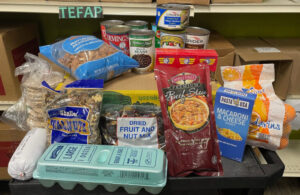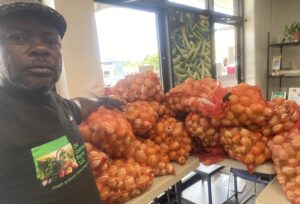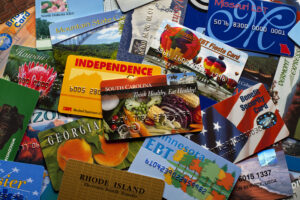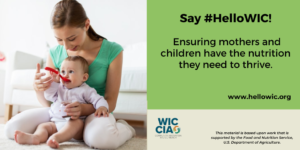At the same time that food banks are mobilizing to feed the millions impacted by the economic devastation caused by Covid-19, many are also ramping up to respond to a flood of calls from people needing assistance enrolling in SNAP.
“We typically get about 100 calls a day regarding SNAP,” said Kimberly LoVano, Director of Advocacy and Public Education at Greater Cleveland Food Bank. “Right now, we are averaging about 2,000 calls a week,” or four times as many.
This story is echoed at food banks across the country where many have found themselves in overdrive as the Covid-19 crisis continues. Not only are the agencies rising to meet the challenges of unprecedented demand for food, they are at capacity in their roles as contracted partners to state agencies that oversee SNAP enrollment. In this critical function, they are guiding an increasing number of citizens through the process of applying for the country’s largest hunger relief program.

“On average, we usually receive about 10 to 15 calls a day regarding SNAP,” says Amalia Swan, Chief Outreach Officer at Food Bank of Central New York, which has for more than two decades provided SNAP enrollment support to the community. “However, from March 18 to April 12, we’ve had 548 requests for enrollment assistance,” she said about the contracted service provided by her organization to the state.
Traditionally, Swan’s food bank has centered its enrollment effort on direct outreach with visits to community and senior centers and tabling at festivals and events. “With this change, we’ve been relying more on technology like Google search and word of mouth,” Swan said about the important function of reaching clients in need.
“Our call center has seen an incredible increase,” said Robin Lamott Sparks, Executive Director of End Hunger Connecticut, an advocacy organization. “Normally, we’d get about 50 calls a week. We’ve had 324 since April 1,” she noted on April 13. To handle this increase, Lamott Sparks says she’s added to her team to field calls seven days a week. “We’ve been fortunate to find some folks who may have been laid off or are able to work hours outside the norm – like weekends – for us,” she said.

In Cleveland, LoVano said that many of the community members engaging with her organization have never sought the food bank’s support before. “They are people who lost their jobs and are having trouble making ends meet. Trying to navigate unemployment benefits has been a challenge for many,” she said, acknowledging the backlog in her state where from mid-March to mid-April more unemployment claims were filed than in the previous two years combined. With the National Guard deployed to assist food banks in her state, LoVano’s organization has been able to shift staff to increase manning of the entity’s SNAP outreach phone lines.
USDA has made accommodations aimed at easing participation in the program to states requesting them, which food bank representatives have said are helpful. These considerations have included nulling in-person interviews during the SNAP vetting process and removing the requirement for SNAP recipients to re-certify midway through their participation.
Despite these accommodations, the surge in applications is creating backlogs at state agencies. In Louisiana, caseworkers who normally would have conducted in-person interviews or spent time re-certifying cases have been reassigned, but are still facing a 30-day back-up in processing SNAP requests, with more than 87,000 applications awaiting review. In Texas, the number of SNAP applications filed in March 2020 more than doubled from the same period a year ago to a reported 230,000. In Florida, SNAP enrollment climbed a reported 67% during the week of March 16, compared to one week prior.
The backlogs are similar to ones seen at the nation’s unemployment offices, where 22 million people have filed for federal financial assistance over the last four weeks. Unable to access benefits when they are most needed, people are turning to food banks in droves. At Greater Cleveland Food Bank, demand spiked by 30% at its weekly food distribution during the first week of coronavirus closures in Ohio. By the second week, a line of cars three miles long wound through the street, and now the number of households queuing for food is continuing to rise by nearly 1,000 a week, LoVano said.

While food banks are doing their best to meet the need, over the long term their resources are no match for the power of the federal government. “The single best way – by far – to get the largest amount of food to the greatest number of low-income people in this crisis is to dramatically increase participation in pre-existing federal nutrition assistance programs,” said Joel Berg, CEO of Hunger Free America, in a letter published on the Hunger Free America website.
Suzanne Willis, development and marketing officer at California’s Second Harvest Food Bank Santa Cruz County, acknowledged the important safety net function of organizations like hers while noting that nutrition assistance programs like SNAP are crucial in moving economies and connecting people to a wider range of healthy food options.
“Pantry items and produce are generally at the food bank,” Willis acknowledged, noting that “milk is hard to get, as is protein.” Willis said that many Americans rely on SNAP to cover essentials at the grocery store while turning to food banks to supplement gaps on the table.
“When someone calls our community food hotline, we tell them where the next food distribution is and we also ask if they have CalFresh [California’s SNAP program],” Willis said about the outreach work of her organization during Covid-19. “If they don’t, we screen them right there,” Willis adds. “CalFresh will help families exponentially as we recover from the pandemic.” — Nicole Rasul
———–
Nicole Rasul is an Ohio-based freelance writer who covers food and agriculture. Her work has appeared in Civil Eats, Modern Farmer, Forbes.com, Edible Columbus, Edible Indy and others. Read more at nicolerasul.com.









